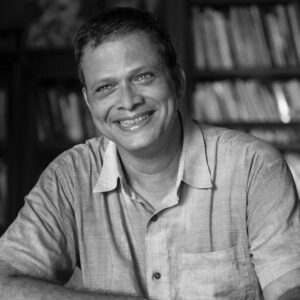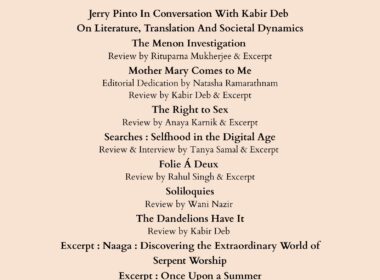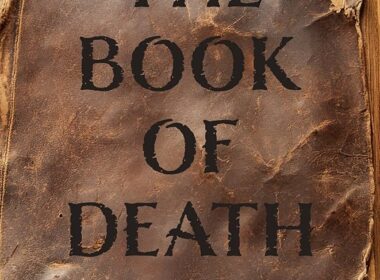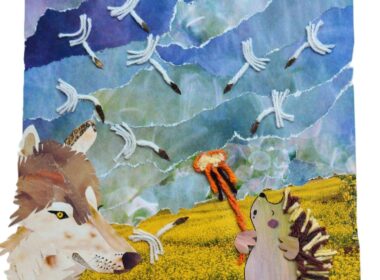Jerry Pinto In Conversation With Kabir Deb On Literature, Translation And Societal Dynamics
KD: You have been documenting stories for quite a long period. What is the basic change in the dynamics of literature you get to see in the stories of the current period?
JP: I don’t know whether I am well read enough to answer that question. On the positive side, there is a positive efflorescence of texts that we see. There are more writers, more poets, more translators, more editors. Or were they always there and were invisible? Can it be that the democratisation of the media via social media handles and the ‘likes’ culture has made what was invisible, visible? There are also more institutions: more publishing houses, more literary agents, more prizes. These are tangible presences and their contribution—or lack of it—will be ready for study as soon as a suitable period of time has elapsed. What is that suitable period of time? I have no idea. Books cast long shadows. And the ones whose shadows seem stunted at noon suddenly seem much longer in the evening.
Since our academic scene seems intent on reinventing the North American wheel, borrowing everything from the US including student indebtedness, no doubt we will see the rise of the Master of Fine Arts (Literary Writing) in the future. Then there will be PhDs awarded when the candidate has finished a novel. This should have another series of domino effects.
Beyond the binary of good and bad, there is change. It is inevitable, it is uncomfortable and it is what drives literature.
KD: What is the process that you maintained while preparing projects like Em and The Big Hoom and The Education of Yuri?
JP: We have now a well-established binary between living and creating. And yet these are not hermetically sealed compartments. They leak into each other. On some fundamental level, the body must be willing to make peace with the brain and follow its commands. On another level, there must be a space and a time cleared from living to make creating possible. On yet another level, there is the administrative work that is essential for all creation. All this is preparation for the artefact called a book. I don’t prepare for writing. I live and as I live, I experience. As I experience, I make meaning. As I make meaning, I discard it and invent other meanings, these can be impersonal or personal, distant from reality or rooted in it. Then I bring this back into the realm of the now and the realm of the interpersonal, the imagined relationship with the reader being some kind of lamp. And finally, there is the revelation of othered meaning. How does the book seem to the reader? What does the reader make of it? I think what I have learned to trust is the cyclical nature of the entire enterprise.
KD: Borges writes, let others pride themselves about how many pages they have written. I’d rather boast about the ones I’ve read. Similarly, in the case of acting, listening becomes primary. Amidst so many writers, agencies and constant marketing, has the reading picturesque changed? How should a writer deal with this influx of marketing and a rising urge of staying relevant?
JP: I recently heard a student at a university claim that he was suffering from Readers’ Block, a cognate, I suppose of writers’ block. I imagine there is such a phenomenon, compounded by the Dopamine Addiction Pandemic. I imagine that the delayed release effects of reading have been overshadowed by the 15-second hit, some of these reels now coming with a warning/plea: ‘Wait until the end’. But I also think that there is equally a dangerous desire to read X number of books a year, to set oneself a goal and then speed-read books. In an age of constant surveillance and constant attention seeking, reading is a subversive act. It demands attention. It demands quiet. It demands responsiveness. I think we will always have readers and reading but despite the growth of literacy, the percentage will always remain a small but significant one.
KD: In your book The Education of Yuri, you prepared the readers for a complete picture of the life that Yuri lives. The detailing happens to go in parallel with the city and its various societal changes. The sense of loneliness, loss and identity becomes evident in the process. This is in contrast to Em and The Big Hoom, where situations build-up to keep the characters without making the world extensive before the readers. How do you approach the aspect of detailing while writing a story and what makes it strong in one book while redundant in the other?
JP: Is God in the details? Is the devil? Are the details hollow? Are they full and sumptuous? Don’t hollow things resonate more than full things? Does truth go thunk and falsity go plink? What is the sound you are looking for? Is Mrs Arnolfini pregnant or is that the fashion? Are those flower pots hiding skeletons? What colour are Madame Bovary’s eyes? There are no easy answers to the question of details. You develop a sense for them, I think, as you go along. And perhaps it is journalism that helps. I came of age in a world where the number of words allotted to journalists was being cut down. Gone were the palmy days in which Ivan Fera could take fifty pages or more to do justice to a natural disaster; gone were the reviews that spilled over two pages of a broad sheet, see Arvind Krishna Mehrotra on the Oxford English Dictionary. Articles that once ran into a thousand five hundred words were now to be reduced to seven hundred words. Of these restraints are born new strategies. And choosing your details seems to be one of the wins.
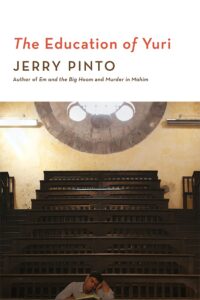
Image courtesy of Speaking Tiger
KD: You have written quite a few works of non-fiction like Helen: The Life and Times of an H-Bomb, Citizen Gallery: The Gandhys of Chemould and the Birth of Modern Art in Bombay and Bollywood Posters with Sheena Sippy. For you, personally, how does the writing change when you are documenting a non-fiction and what do you have to pick up and shed during the process?
JP: Fiction is internally led even if it is eventually outward facing; non-fiction is externally driven and may eventually end up refusing to have anything to do with what the world expects of it. In fact, non-fiction must surprise while fiction is allowed free play. The three books you have listed have quite different origin stories. The book on Helen started with a prompt from Ravi Singh, long-time editor and friend. I developed the themes on my own and was only led by a long love affair with Bollywood in its prime, in the 1970s. Citizen Gallery was a commissioned work; the commission arose out of a Facebook post I wrote about Kekoo Gandhy, celebrating his life. The family asked me if I would write a book and gave me complete access and responded with complete honesty to all questions. Here the issue was what not to say of what I knew. Bollywood Posters was also a commissioned work; but it was a coffee table book and those have their own logic and their own demands.
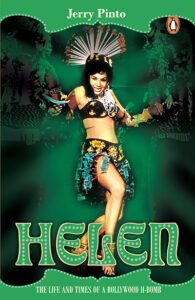
Image courtesy of Penguin Random House India
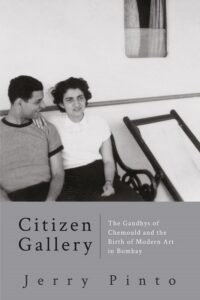
Image courtesy of Speaking Tiger
KD: Other than writing your own work, you have also translated biographies from Marathi and Hindi and novels from Marathi and Konkani. How do you balance producing original work with translations?
JP: I do not think of it as a balancing act. I think of them as acts that are independent of each other and yet which partake of the same sustaining belief in the transformative power of words and language. Writing is a lonely business even if you are conjuring up people in your head. Translating brings another voice into the room and that can help.
KD: Why do you think translation has suddenly taken a sudden uprise in the current time?
JP: The romantic in me would like to believe that it is because we have entered a time when we want to know what is happening in other languages. The realist in me believes that it is because of the prizes awarded to translations that have meant a rise in the number of works being translated.
KD: In your book Em and the Big Hoom, you address the issue of mental health, but the story is stitched with both tenderness and a manic extremity. The apathy of society towards those who suffer from depression is also a focal point of the book. We are living in a time of hatred and having a book like this one is important. Also, when the awareness of mental health is associated with accessibility of resources, do you think that the concept is still restricted to an elitist sphere?
JP: I must confess that I did not write Em and the Big Hoom to address issues of mental health. I wrote it for the usual mess of reasons that is at the root of most novel production. Most of all it was the feeling that I had a story to tell and I wanted to tell it. I have often been asked why it was not written as a work of non-fiction. I wrote it as a novel as an act of self-preservation. When the going got tough, I could say to myself: You must tell the story of the Mendes family as best you can. That would help me get back to the work, providing a necessary distance between myself and what I was writing.
The pharmacopoeia is agnostic; the practice of mental health is urban/urbane and Anglophone. This is a situation that needs to be addressed urgently. I don’t think we are doing anything about it and I believe it may be because we see mental health as a luxury.
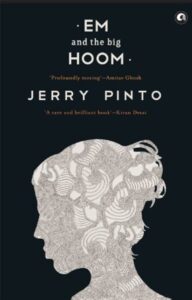
Image courtesy of Aleph Book Company
KD: Money has become the primary idea of writing. But, at the same time, a writer cannot run or operate without a ‘day job’. Even in such a situation, people are not eager to buy a poetry collection and small publishers have been going through substantial loss of money, time and energy. What makes fiction and non-fiction so saleable in India while a literature or genre that’s associated with every emotion gets little visibility?
JP: We must remember that for most people in this country, the idea of the book is tied up with the education system. Those are the only books they will see for the first fifteen years of their lives. This means that the book is seen as a means of self-improvement. If it does not secure me a seat in a medical college or an IIT, what value can such a book have?
Thus, poetry and fiction will lag behind in numbers but not in impact. Midnight’s Children is still being read, Jejuri by Arun Kolatkar is prized by those who bought it. I never see a copy of it on the pavement stalls around Fountain or at Matunga where a healthy second-hand book trade plies. I believe therefore that these are vital to our society, necessary to our growth.
Even science cannot proceed without imagination. If you can’t dream it, you can’t invent it and how can you dream it—Kekule’s is not the only documented dream solution—if you do not have a healthy imagination?
KD: Since you are a translator, I wanted to ask you about a particular situation: we do find that most phenomenal works of literature are translational projects. Yet the cover of the books hardly has the name of those who make these works readable for the rest of the world. In India, translators are paid unequally and yet, the market is full of works of translation. What is the reason behind this dichotomy that is profitable for the publishers but leaves less space for the translators?
JP: I think in some ways translators are now getting their fair share of the spotlight and their fair share of attention. If you look at the cover of a Gabriel Garcia Marquez novel or a Gunther Grass novel, you will not see the translators’ names anywhere. Does anyone remember who translated the works of Goscinny & Uderzo, of Hergé? They are tucked away on the inside pages. This, I believe is not so much an attempt to dishonour the translator as it is a publishers’ ploy to trick the reader into believing that the work was originally written in English. It is an old presumption that translated works were only read by sophisticated elites and in order to mass-base a book’s following, it would be necessary to suggest that the book was written in English.
Meanwhile, the pay is getting better but it rarely covers the costs of the work.
KD: Could you recommend some of your favourite books which you keep in mind when you write, think and simply procrastinate?
JP: The Pillow Book of Sei Shonagon as translated by Ivan Morris
The Tale of Genji by Lady Murasaki as translated by Edward Seidensicker
Land, Guns, Caste, Women by Gita Ramaswamy
The Chronicle of an Hour and a Half by Saharu Nusaiba Kinnanari
Lorenzo Searches for the Meaning of Life by Upamanyu Chatterji
Girl, Woman, Other by Bernardine Evaristo
The Enchantress of Florence by Salman Rushdie
The Hungry Tide by Amitav Ghosh
Things Fall Apart by Chinua Achebe
Stet by Diana Athill
Middlemarch by George Eliot
The Trotternama by I Allan Sealy
Yuganta by Iravati Karwe as translated by W Norman Brown
Missing Person by Adil Jussawalla
The Old Playhouse and Other Poems by Kamala Das
Jonahwhale by Ranjit Hoskote
The Gallery of Upside Down Women by Arundhathi Subramaniam
The Veiled Suite by Agha Shahid Ali
Entr’acte by Deepankar Khiwani
I Have Not Seen Mandu; A Fractured Collage by Swadesh Deepak, as translated by Jerry Pinto
Baluta by Daya Pawar as translated by Jerry Pinto
Jerry Pinto is the author of novels, Em and the Big Hoom (2012; winner of The Hindu Literary Prize and the Crossword Book Award), Murder in Mahim (2017), and The Education of Yuri (2022). His non-fiction book, a biography of Bollywood icon Helen, won the 2006 National Award for the Best Book on Cinema. He has also written books for children and has two books of poetry. He has translated books from Marathi, Hindi, and Konkani. He has won numerous awards, including the Windham-Campbell Prize for Fiction (2016) and the Sahitya Akademi Award (2016).
